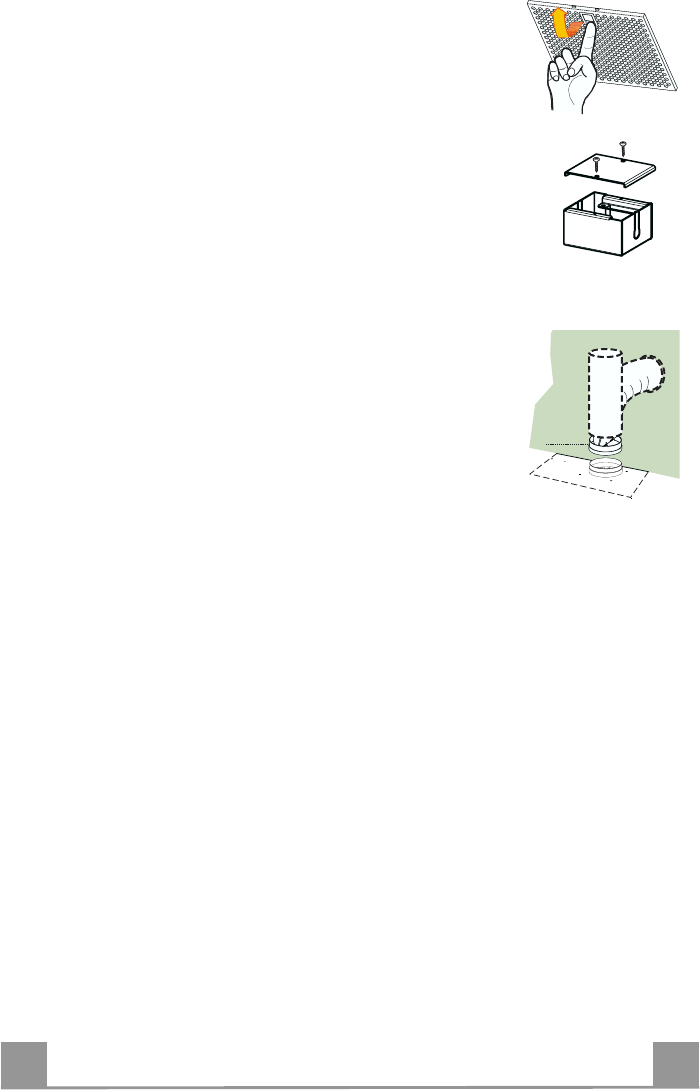
EN
1
0
10
6. Remove the filters one at a time holding them up with one
hand and pulling the handle downwards with the other hand at
the same time.
7. Remove the terminal box cover (located on back wall of hood)
from the hood. Remove the power supply cable knockout using a
flat-blade screwdriver. Attach strain relief in power supply cable
opening so that clamping screws are inside of hood. Tip hood
back to its bottom surface.
8. If roof or wall cap does not have a damper, attach damper to exhaust opening on top of the
hood using two small screws from hardware package.
Install the damper 10 ø 6” and fix the duct in
position using sufficient pipe clamps (not supplied).
9. Vented installations (Ducted):
Make necessary cuts in the wall for vent fittings.
Important: Install vent system before installing the hood.
10. Non-vented (recirculating) installations:
A vent system that directs the recirculated air back into the room either through the soffit or
through the cabinet top is required. Important: If venting through the cabinet top, do not
terminate the exhaust into dead air space such as an attic or enclosed soffit.
Venting through the soffit:
Assemble the vent system you will use over the exhaust collar but do not attach the vent
system yet.
Note:The vent system can exhaust out the front of the soffit or be rotated to exhaust out
the side or end of the soffit.
Measure distance from top of hood to center line of 6" round vent.
Mark the distance on soffit. Mark and cut a 6” 1/2 round vent opening.
The vent cover is included will be installed in Step 13.
Mark the location where vent cover will be installed in the cabinet top and cut a 6” 1/2
round opening for the vent cover. Important: Do not terminate exhaust into a dead air space
such as an attic or enclosed soffit.
11. Place the hood mounting screws close to the holes in the cabinet bottom. Lift hood into
place while feeding wiring through strain relief. Insert the screws through the clearance
holes and start them into the hood. Then, tighten screws securely.
10


















